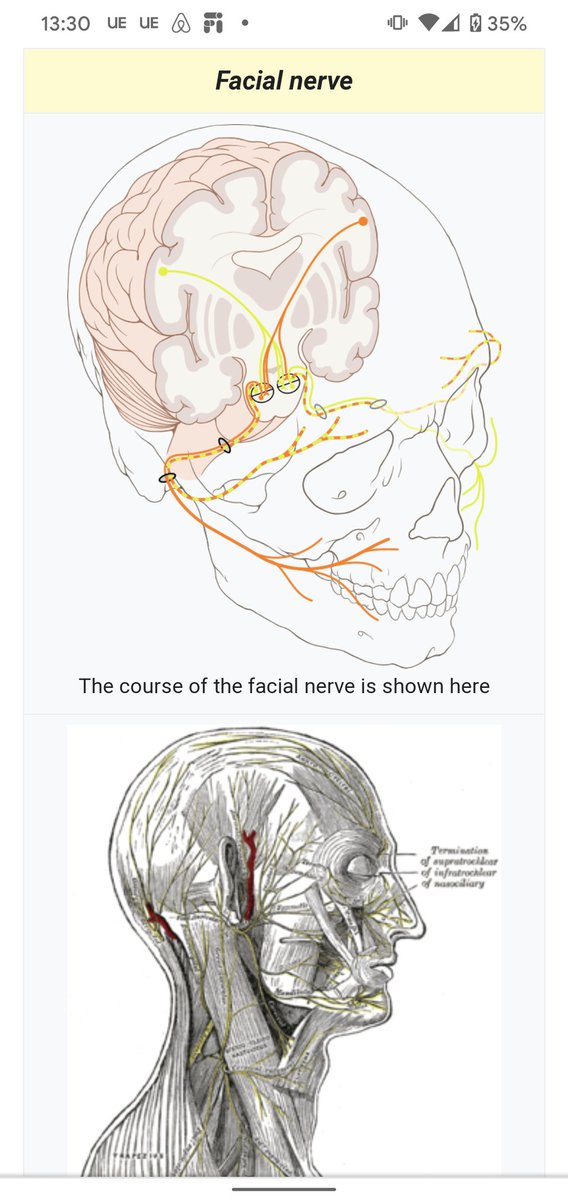
Stewart Alsop III - Host of Crazy Wisdom Podcast
2 Aug,
37 tweets, 9 min read
I've long been on the trail of a theory of movement and why modern humans are so maladaptive to physical environments. It just came to me in words. In nature there are two things you never see:
Shoes and Chairs
Shoes and Chairs
It's not to say that these tools aren't very handy. If I were trudging through the artic I would want me some shoes.
But when was the last time you walked outside barefoot on a sunny day? How often do you see others doing that?
But when was the last time you walked outside barefoot on a sunny day? How often do you see others doing that?
Shoes:
They block a certain type of receptor called a pacinian corpuscle. These receptors sense vibration in the surfaces you touch. If your feet only touch the inside of your shoes you are essentially starved from sensation. Better to walk barefoot 5 minutes a day to train.
They block a certain type of receptor called a pacinian corpuscle. These receptors sense vibration in the surfaces you touch. If your feet only touch the inside of your shoes you are essentially starved from sensation. Better to walk barefoot 5 minutes a day to train.
The feet are not separate from the rest of the body, they are intimately tied to all other parts of the body. The deep six muscles of the hip are tied to these Pacinian receptors. When you don't train your feet, you lose sensitivity in the hips and there are effects up the spine.
Chairs:
If you look in nature you never see a standardized seating surface. There are great rocks and tree branches for sitting on but they are never at a standardized sitting angle like your favorite chair. When seated in a chair the angle of your hip never changes.
If you look in nature you never see a standardized seating surface. There are great rocks and tree branches for sitting on but they are never at a standardized sitting angle like your favorite chair. When seated in a chair the angle of your hip never changes.
Not only that but your pelvic floor gets the same sensation and pressure every day. This is confounded by the fact that your legs are almost always in the same position. Now think about how much variation in your legs can happen from sitting on the floor. 

Another great benefit from temporarily ditching the chair is that one of the most important metrics for general health is how much ease you can have while standing up from the floor. When you sit in chairs 100% of the time, you never do this! Think about that for a second.
When it comes to movement, variation is the key to a healthy long term body. Non-habitual stimulation of the fascia through the safe exploration of possible movements really is the key. Once I adopted this attitude my life changed like crazy.
Since all the follows are too afraid to dance I've had to branch out from my obsession for the past 3 years (partner dancing). I'm not doing capoeira with Amir Solsky. Funny enough Capoeira is socially distanced appropriately when practiced outside. It's also really fun and hard
After doing some research just now I'm going to do a separate thread on Capoeira. The history is just so intertwined with what I studied in Brazil that I think I'll be quite prolific on this one:
https://twitter.com/StewartalsopIII/status/1291413060079370240?s=20
What do most people get wrong about the physiology and neuroscience of warming up before more intense movement?
Here is a video on the functional anatomy of the hand and how it relates to the whole body:
Here is more on how the jaw is functionally related to the rest of the body:
Most people use stretching as an injury prevention method for intense exercise. I think this is misguided. It should be treated as a sensory training method with the goal of unlocking principles of how the body moves in space and time. Pleasure and pain are important feedback.
Did you know that you are quite literally always stretching?
When you sit down in a chair, that is a stretch that you have habituated to. When you stand up its the same.
Everything is a habit, particularly in movement. The key to long term health is non-habitual fascial stretch
When you sit down in a chair, that is a stretch that you have habituated to. When you stand up its the same.
Everything is a habit, particularly in movement. The key to long term health is non-habitual fascial stretch
Of course that isn't the only key, strength training is another HUGE one that will help with depression and neuroplasticity.
Another commonly overlooked one is spiritual and psychological transformation which does have an effect on movement, a huge one.
Another commonly overlooked one is spiritual and psychological transformation which does have an effect on movement, a huge one.
Another overlooked thing about stretching is that once you've turned a particular stretch into a habit you need to find a different stretch. Many people treat the stretches they get from PT's as rituals to be performed for the rest of their lives. Always continue to evolve.
I'm starting to realize that I've never done a dedicated #stablethread on dancing even though its been my primary movement modality over the past 4 years. This is actually telling because most "serious" movement people disregard dancing as some of antiquated movement modality.
Here is that #stablethread on dancing:
https://twitter.com/StewartalsopIII/status/1309536636829536256?s=20
Lots of people talk about the core but don't know what it is:
its made up of the pelvic floor, the multifidi, transervus abdominus, and internal obliques.
I learned from @julesyoga that to have core stability all you need is a 2% contraction. That's it. Stop holding your belly
its made up of the pelvic floor, the multifidi, transervus abdominus, and internal obliques.
I learned from @julesyoga that to have core stability all you need is a 2% contraction. That's it. Stop holding your belly

Do people from traditional cultures who do not experience back pain also keep their knees locked while bending over to pick something off the ground?
What does keeping the knees locked while bending over offer, physiologically speaking?
What does keeping the knees locked while bending over offer, physiologically speaking?
Your body exists in a constant state of tension and that is an excellent thing. The idea is not to get rid of tension because then you couldnt move, walk or breathe, but it is to find the ideal amount of tension. When in movement the amount needed is way less than you think.
Is it a coincidence that chiropractic and stretching both leads to that popping sound? What is the physiological causative agent for that popping sound in an adjustment?
I asked chiropractor Ryan Marchman the above and says it has to do with the fluid in a synovial joint being compressed and nitrogen is released creating the popping sound. Here is a MRI of what happens:
What would happen if you judged your exercises on how much fun you had rather than how much pain you could endure or how much work you did?
How would that be change the quality and quantity of your movement?
How would that be change the quality and quantity of your movement?
For many years now I have pondered the question:
What type of movement/exercise is giving someone a massage?
I think I finally have an answer. I'm going to start a seperate #stablethread on it
What type of movement/exercise is giving someone a massage?
I think I finally have an answer. I'm going to start a seperate #stablethread on it
Most people unconsciously think that our internal organs exist in some separate vacuum separated from our muscles and other tissues and they are unable to be influenced by our movement patterns. There are layers of tissue that separate them, but not from mechanotransduction
When you move your torse and arms to the left and your hips and legs too the right your internal organs are undergoing mechanotransduction (biological processes are being affected by mechanical stimulation). In yoga classes you will hear specific effects from movements, but....
I don't think we really know how specific movements affect specific internal organs, but I think its clear to everyone who inquires into it that our body is one continuous whole even if we can imagine that we can zero in on a part. The idea that separation is primary is foolish.
For example the transversus abdominus is the deepest layer of the abdominal muscles and connects through fascia to the peritoneum. The peritoneum is the outer layer of the internal organs and protects them from some things but obviously is continuous with the muscles and organs.
Somehow @jerryteixeira came up with the perfect video for exactly what I'm working on right now in my own fitness journey. These squats are perfect examples of something that will engage the core in functional ways and probably leads to the benefits above
https://twitter.com/jerryteixeira/status/1314272130356322304?s=20
When learning new jargon, the word helps us to formalize and crystalize a new way to be sensitive to whats going on in movement. Here are three new terms I'm starting to crystalize:
1. intramuscular synchronization
2. intramuscular coordination
3. motor unit recruitment
1. intramuscular synchronization
2. intramuscular coordination
3. motor unit recruitment
What most people don't realize is the heavy influence the brain has on movement. These terms above aren't happening only in the target muscle itself, but more often in the picture or model that the brain has of the body. This is why meditation can be helpful for movement.
Why is it that learning the name of a muscle and studying how it connects to other muscles in its immediate vicinity leads to more graceful movement and more neuromuscular control?
Here is a #stablethread that goes into anatomy but I don't know the answer
Here is a #stablethread that goes into anatomy but I don't know the answer
https://twitter.com/StewartalsopIII/status/1316410348971479046?s=19
I think it has something to do with imagination. The image we have of the body is not actually the body. The image is processed in the brain (which is directly attached to nerves in the skin, but the heavy lifting is done in the brain). Its not the actual body you feel.
So when we study anatomy it seems as if our imagination becomes more aligned with reality. If you know anatomy and you go to a class lead by a yoga teacher who does not, I think this will become clear. Many of the cues in a yoga class are pure imagination, disembodied.
• • •
Missing some Tweet in this thread? You can try to
force a refresh




